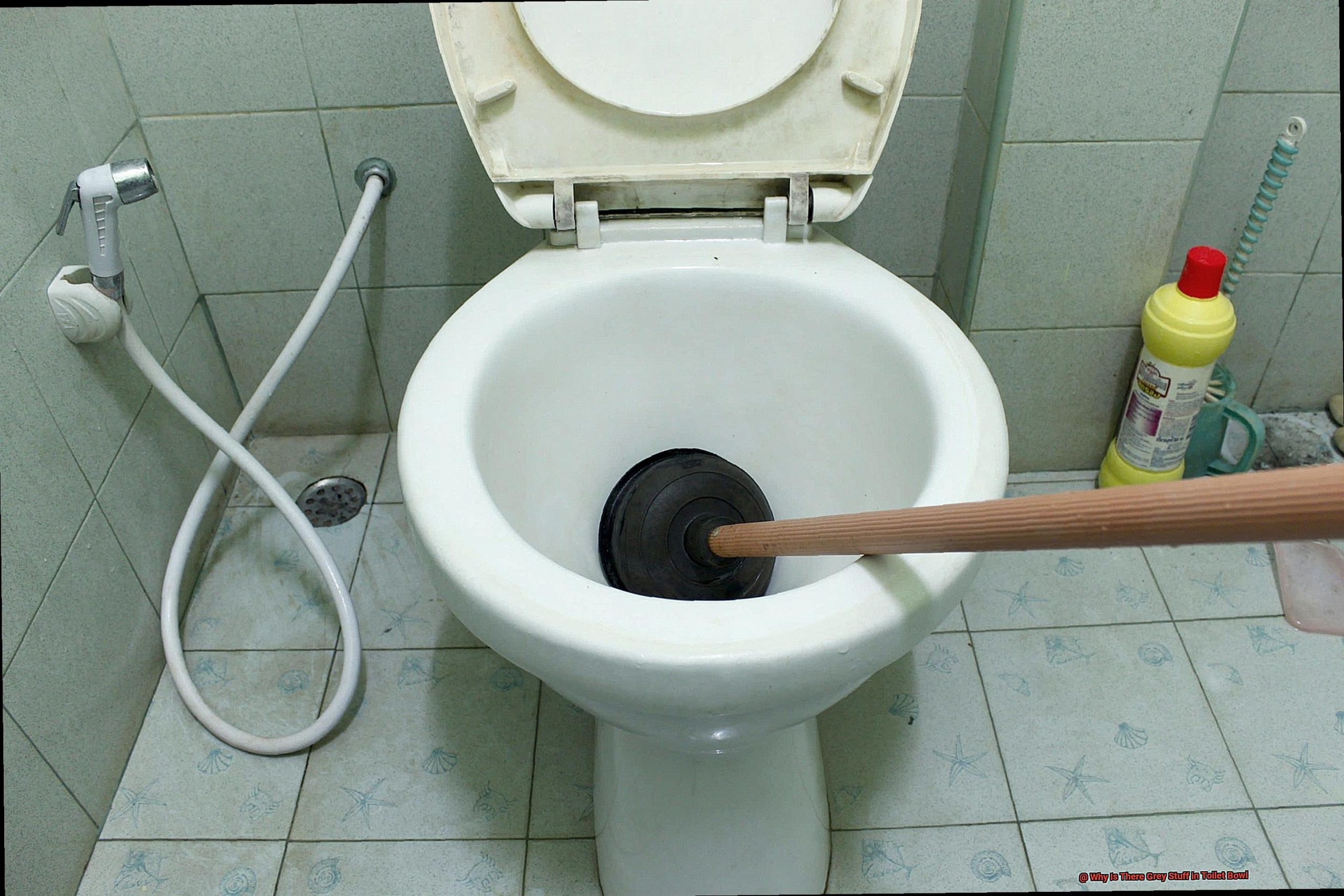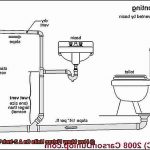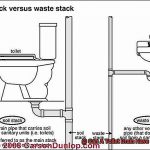Have you ever been taken aback by a strange grey substance lurking in your toilet bowl? If so, you’re not alone. It’s a common issue that raises the question: what exactly is this grey stuff and how did it get there?
Unfortunately, the answer isn’t always simple. The source of the grey substance can vary from harmless to potentially harmful depending on its cause. Identifying the culprit is key to determining whether or not it requires immediate attention.
There are several reasons why you might find grey stuff in your toilet bowl – mineral and bacteria buildup from your water supply, poor ventilation in your bathroom, or even plumbing problems. In this blog post, we’ll delve into each possibility and provide tips on how to address them effectively.
Don’t let this unsightly issue linger any longer. Keep reading for expert advice on preventing and dealing with grey stuff in your toilet bowl.
Contents
Why Is There Grey Stuff in Toilet Bowl?
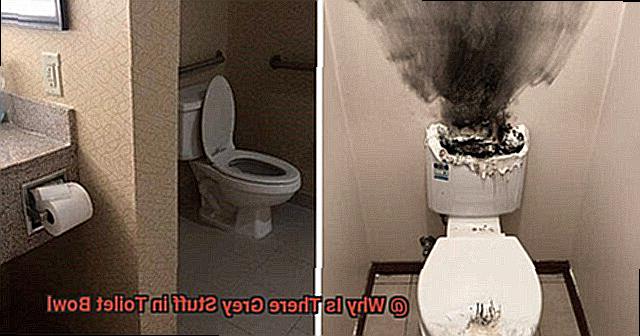
This unsightly residue can be a real nightmare for homeowners, but luckily, there are ways to address it. In this post, we’ll explore the most common reasons for grey stuff in a toilet bowl and provide expert tips for preventing it from happening in the future.
One of the primary culprits behind grey stuff in a toilet bowl is hard water. When water contains high levels of minerals like calcium and magnesium, it can leave deposits on surfaces like toilets over time. These deposits build up and turn into a stubborn greyish-black substance that can be challenging to remove. If you live in an area with hard water, consider installing a water softener or using specific cleaning products designed to tackle hard water stains.
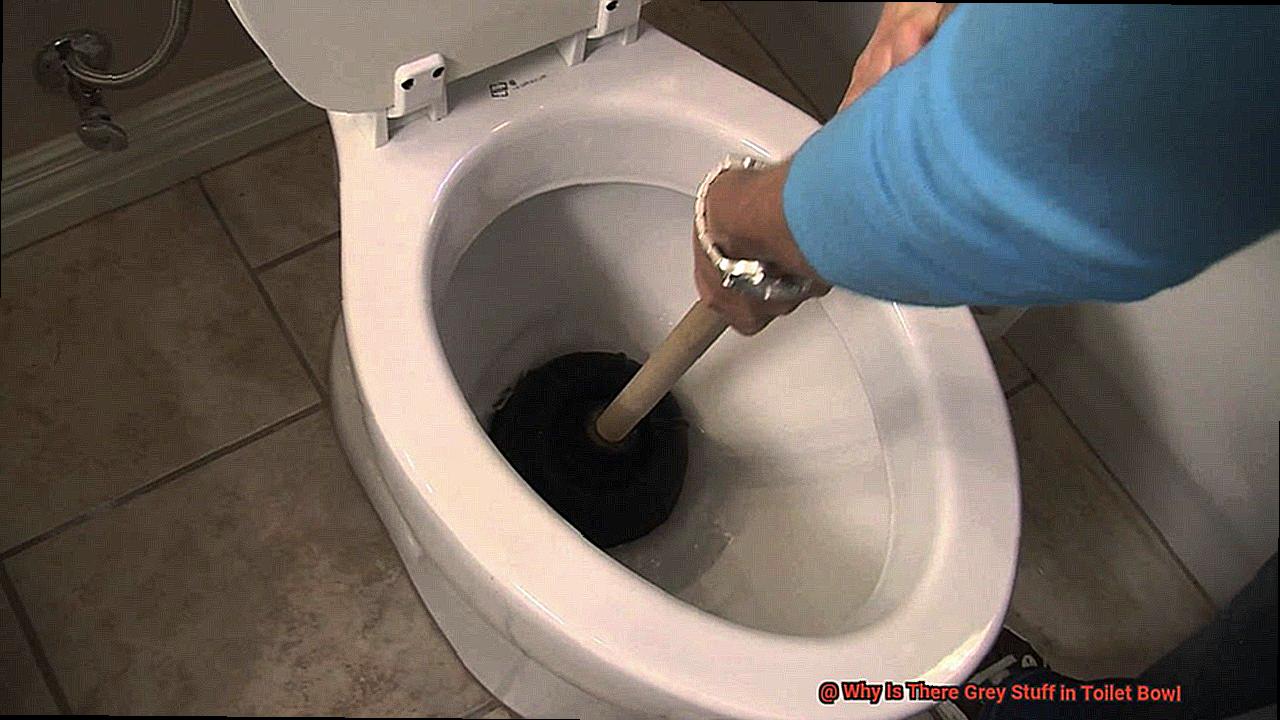
Another possible cause of grey stuff in a toilet bowl is bacteria growth. Toilets offer an ideal environment for bacteria to thrive and multiply due to the moist conditions present in the bowl. If you notice a foul odor emanating from your toilet bowl, it could be a sign that bacteria are present. To prevent bacteria growth, make sure to clean your toilet regularly and thoroughly using a disinfectant or bleach solution.
Finally, certain cleaning products may also lead to grey stuff in a toilet bowl. Some toilet bowl cleaners contain harsh chemicals that can react with the minerals in hard water, creating a greyish-black residue. It’s essential to read the labels on cleaning products carefully and choose ones that are safe for use with your particular type of toilet.
In conclusion, there are several reasons why grey stuff can appear in a toilet bowl, including hard water buildup, bacteria growth, and certain cleaning products. But by understanding the cause of this issue, homeowners can take preventative measures to keep their toilets looking fresh and clean.
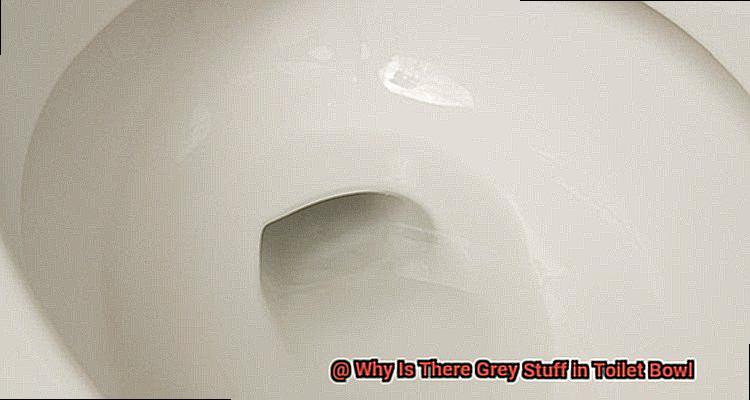
What Causes Mineral Buildup?
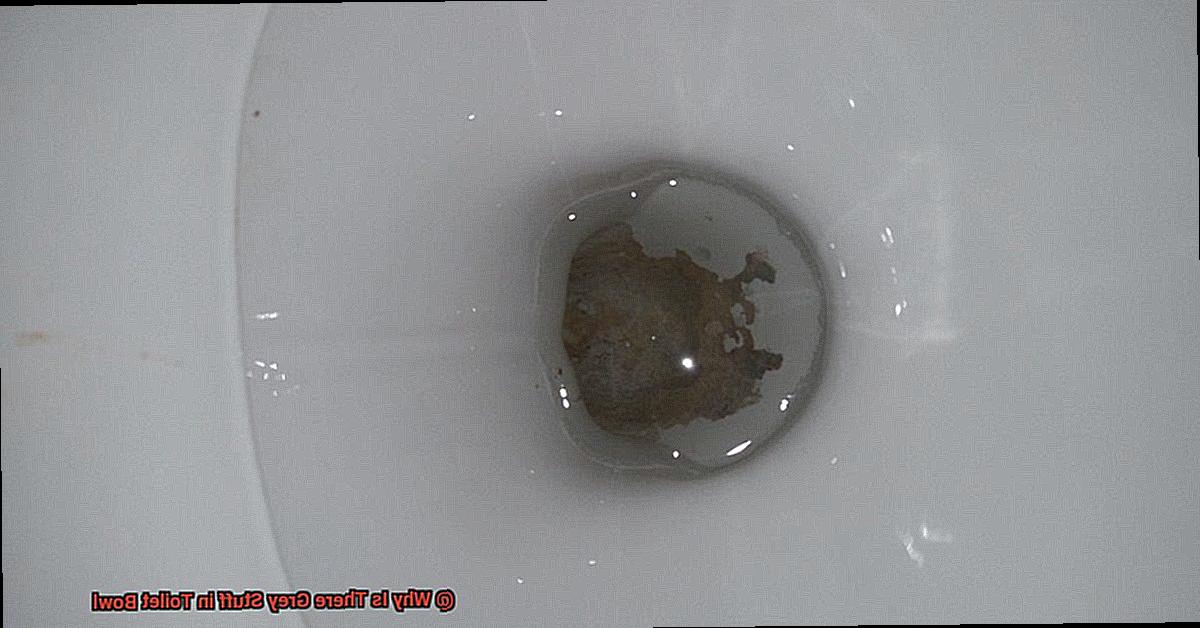
It’s likely caused by mineral buildup, which occurs when minerals like calcium and magnesium accumulate in the water supply. As the water evaporates, these minerals are left behind on the inner surfaces of your toilet bowl.
The severity of mineral buildup depends on the hardness of your water. If your water is hard, meaning it contains more minerals, you’re more likely to experience mineral buildup than if your water is soft.
But mineral buildup isn’t just an eyesore. Over time, it can lead to clogged pipes and reduced water flow, causing decreased performance and increased energy costs.
So how do you prevent mineral buildup? Regular cleaning is key. Use a mild abrasive cleaner or a mixture of vinegar and baking soda to keep your toilet bowl fresh and clean.
You can also install a water softener to reduce the amount of minerals in your water supply.
How to Identify Mold or Mildew Growth?
Mold and mildew growth in your toilet bowl can be a real headache, not to mention a health hazard. Fortunately, identifying the presence of these fungi is not rocket science. Here are five subtopics to help you identify mold or mildew growth and keep your toilet bowl clean and healthy.
Appearance
Mold and mildew can have different colors, textures, and odors, but they share some common traits that make them easy to recognize. These fungi thrive in damp and humid environments, and they can appear as fuzzy or slimy spots on the surface of the porcelain. Mold can be black, green, or white, while mildew is usually gray or white. If you notice any of these signs in your toilet bowl, you may have mold or mildew growth.
Location
Mold and mildew tend to grow in areas with high moisture levels, such as the shower stall, bathtub, sink, or toilet bowl. In the toilet bowl, you might notice gray or white spots on the rim or under the seat. These spots can spread quickly and cover a large area if left untreated.
Bleach Test
To confirm whether the gray stuff in your toilet bowl is indeed mold or mildew, you can perform a simple test using bleach. Put on rubber gloves and dip a cotton swab into bleach. Rub the swab on the suspected area of mold or mildew growth and wait for a few minutes. If the spot lightens or disappears, it is likely mold or mildew.
Discoloration
Not all discoloration in a toilet bowl is caused by mold or mildew growth. Hard water deposits, rust, and other minerals can also cause discoloration. To confirm whether the gray stuff in your toilet bowl is caused by mold or mildew growth, look for visible signs of discoloration and inspect the water supply line leading to the toilet. If there is any visible discoloration or slime, it could indicate the presence of mold or mildew growth.
Musty Smell
Another way to identify mold or mildew growth is to check for a musty odor in the bathroom, especially in areas where moisture accumulates. If you notice a musty smell, it could indicate the presence of mold or mildew growth.
Identifying mold or mildew growth in your toilet bowl is crucial for maintaining a clean and healthy bathroom environment. By paying attention to their appearance and location, performing a simple bleach test, and checking for musty smells, you can determine if you have mold or mildew and take appropriate steps to remove them.
What Causes Discoloration and Pitting from Cleaning Products?
It’s a common problem caused by harsh chemicals that can damage the porcelain surface. But fret not, as an expert on this topic, I’m here to provide you with all the information you need to prevent this problem from happening.
Hydrochloric acid is one of the main culprits behind discoloration and pitting. This strong acid is commonly found in many toilet bowl cleaners and effectively removes stains and buildup, but it can also eat away at the porcelain surface over time. This leads to unappealing pitting and discoloration that’s difficult to remove.
Abrasive cleaners are another cause of discoloration and pitting, as they contain small particles or grit that can scratch the surface of your toilet bowl. These scratches become more apparent over time and can result in discoloration.
But don’t worry, there are ways to prevent this problem. Switching to gentler cleaners labeled safe for use on porcelain surfaces is key. You can also try natural cleaning solutions like vinegar and baking soda, which are less likely to cause damage. Additionally, it’s crucial to avoid harsh scrub brushes or abrasive sponges that could scratch the surface of your toilet bowl. Instead, opt for a soft-bristled brush and gentle cleaning techniques.
How to Prevent Grey Stuff from Forming in the Toilet Bowl?
Regular Cleaning
When it comes to preventing grey stuff from forming in your toilet bowl, the first step is regular cleaning. A clean toilet bowl not only looks good but also prevents the buildup of bacteria and minerals that can lead to grey residue.
To keep your toilet bowl clean, use a toilet cleaner with bleach or other disinfectants to kill bacteria effectively. Remember to scrub the inside of the bowl thoroughly, including under the rim and around the edges, with a toilet brush.
Water Softeners and Filtration
Hard water is one of the primary culprits for grey stuff formation in your toilet bowl. It contains high levels of minerals such as calcium and magnesium that can cause stains and buildup over time. To combat this, consider using a water softener or filtration system to treat the water before it enters your home’s plumbing system. This will help reduce the amount of mineral buildup in your toilet bowl and other fixtures, keeping them looking clean and fresh.
Avoiding Harsh Chemicals
While it may be tempting to use harsh chemicals to clean your toilet bowl, they can actually contribute to the formation of grey stuff. Bleach and other harsh chemicals can damage the porcelain surface of your toilet bowl, leading to discoloration or pitting that can cause stains and buildup over time. Instead, opt for a toilet cleaner with natural ingredients or use vinegar and baking soda to clean your toilet bowl effectively without damaging it.
Proper Flushing
Proper flushing is crucial in preventing grey stuff from forming in your toilet bowl. Make sure to flush regularly and with enough force to remove any waste or debris from the bowl.
If you notice that your toilet is not flushing correctly, it could be due to a faulty flapper or other parts that need replacement. Proper flushing will prevent any waste or debris from accumulating in the bowl, reducing the chances of grey residue formation.
Keeping the Lid Closed
Keeping the lid closed when not in use is another essential step to prevent grey stuff from forming in your toilet bowl. This will help prevent bacteria growth and reduce the amount of dirt and debris that can accumulate in the bowl over time. Additionally, make sure to flush with the lid closed to avoid any unwanted splashing or spray that can contribute to bacteria growth.
By incorporating these simple steps into your cleaning routine, you can easily prevent the formation of grey stuff in your toilet bowl. Regular cleaning with a good quality toilet cleaner, use of water softeners and filtration systems, avoiding harsh chemicals, proper flushing, and keeping the lid closed can go a long way in maintaining a clean and hygienic bathroom.
nPCZKXTwJyc” >
Conclusion
To sum it up, the grey stuff in your toilet bowl can be a result of various reasons, such as mineral buildup from hard water, bacterial growth, and the use of harsh cleaning products. It’s crucial to identify the cause of the issue to determine whether or not it requires immediate attention. To prevent this unsightly substance from appearing in your toilet bowl, there are several measures you can take.
Regular cleaning with a high-quality toilet cleaner is one of the most effective ways to keep your toilet bowl clean and hygienic. Additionally, using water softeners and filtration systems can help prevent mineral buildup caused by hard water. Harsh chemicals should be avoided as they can damage the porcelain surface of your toilet bowl and lead to discoloration or pitting. Instead, opt for natural cleaning solutions like vinegar and baking soda.
If you suspect that mineral buildup is causing the grey substance in your toilet bowl, consider installing a water softener or using specific cleaning products designed for hard water stains. On the other hand, if you notice an unpleasant odor emanating from your toilet bowl, it could be a sign that bacteria are present. To prevent bacterial growth, make sure to clean your toilet regularly and thoroughly using a disinfectant or bleach solution.
By taking these preventative measures and understanding what causes grey stuff in your toilet bowl, you can maintain a fresh-looking bathroom environment while also preventing potential health hazards.

